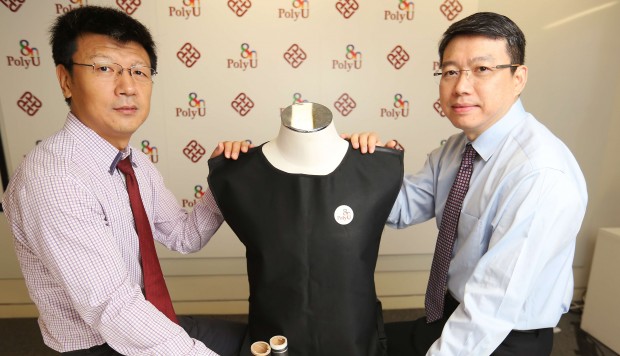
Polytechnic University researchers have created a safer, lighter X-ray shield by mixing the metal used in light bulb wires with a common plastic.
The combination of tungsten and polyurethane offers 40 per cent more protective than lead, which is conventionally used to protect people from radiation during X-ray procedures, yet it is 22 per cent lighter.
“The material is non-toxic and can be recycled and processed into protective clothing,” said Fei Bin, associate professor at the university’s institute of textiles and clothing, who led the team.
While lead has long been used to shield patients from radiation, its toxicity poses a health threat if the protective vests containing the metal wear out or the lead gets damaged.
Fei’s team adopted a new, patented technology to transform tungsten – one of the densest metals – into tiny particles one-tenth the width of light bulb wire. These were then mixed with polyurethane, a highly elastic material, and turned into a new kind of composite garment.
Because of the elasticity, the shielding vest stays protective even after being folded. It can be used for up to three years before needing to be checked for safety, while lead vests require annual testing.
Although tungsten is more expensive than lead, researchers expect the new product will be cheaper as less metal is used.
Professor John Xin Haozhong, head of the institute that jointly invented the material with Fei, revealed that the inspiration to invent better protective gear came after the Fukushima nuclear accident in 2011, which was the largest disaster of its kind after Chernobyl in 1986.
“There are also nuclear plants close to Hong Kong, such as the one in Daya Bay. How could we protect people better with lighter materials from radiation harm?” Xin said.
The team hoped the new garment could serve patients who needed X-rays and health care workers in radiology departments who faced daily risks.
The university was still exploring commercial opportunities and expected the products could be made available in six months to a year if any companies showed interest in production.
Leave a Reply